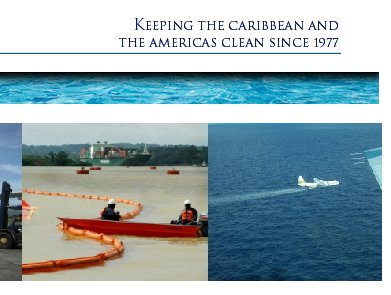Containing the spill
07 May 2010 - Deepwater Horizon
 As reported by Wired and C&EN and many others BP is trying to contain the damage done in the Deepwater Horizon oil spill by adding huge amounts of surfactant at the disaster site. The surfactant should emulsify the oil into tiny droplets making it degrade faster or at least make it disperse in the ocean and even sink to the bottom. Luckily the oil from the spill is high in asphaltene , a compound class that promotes emulsification (according to C&EN). The entire cleanup effort could explain why the disaster has not yet produced the familiar television images of black-caked beaches and smeared bird life even after two weeks. It does explain the bright orange glow produced by the (emulsified) oil when floating on water.
As reported by Wired and C&EN and many others BP is trying to contain the damage done in the Deepwater Horizon oil spill by adding huge amounts of surfactant at the disaster site. The surfactant should emulsify the oil into tiny droplets making it degrade faster or at least make it disperse in the ocean and even sink to the bottom. Luckily the oil from the spill is high in asphaltene , a compound class that promotes emulsification (according to C&EN). The entire cleanup effort could explain why the disaster has not yet produced the familiar television images of black-caked beaches and smeared bird life even after two weeks. It does explain the bright orange glow produced by the (emulsified) oil when floating on water.
Question for this blog: what exactly is this miracle surfactant called Corexit EC9527A produced by Nalco. The material safety data sheet issued by the United States Environmental Protection Agency is not helpful but according to the one issued by Nalco the formula contains on average 45% 2-butoxyethanol, 15% of a proprietary organic sulfonic acid salt and 3% polyethylene glycol. This MSDS incidentally is published on cleancaribbean.org, a website maintained by a bunch of oil companies carrying the slogan keeping the Americas clean since 1977 ..ahum.
According to Wired BP could also have opted for the more effective and less toxic formulation called dispersit produced by the company Polychemical (MSDS here). Patent number 6,261,463 (1999) reveals what is in it: water 17%, the sulfonic acid of dodecyl benzene 5%, triethanol amine 5%, dipropylene glycol methyl ether 20% (compound similar to 2-butoxyethanol?), ethoxylated tall oil fatty acid 5%, the amide of coconut oil 5% ethoxylated tallow amine 8%, sodium petroleum sulfonate 6%, an amine oxide surfactant 9%, aromatic phosphated ester 9%, tall oil 5%, another coco amide 5%, an ethoxylated secondary alcohol, 0.5% and another amine oxide 0.5%.
